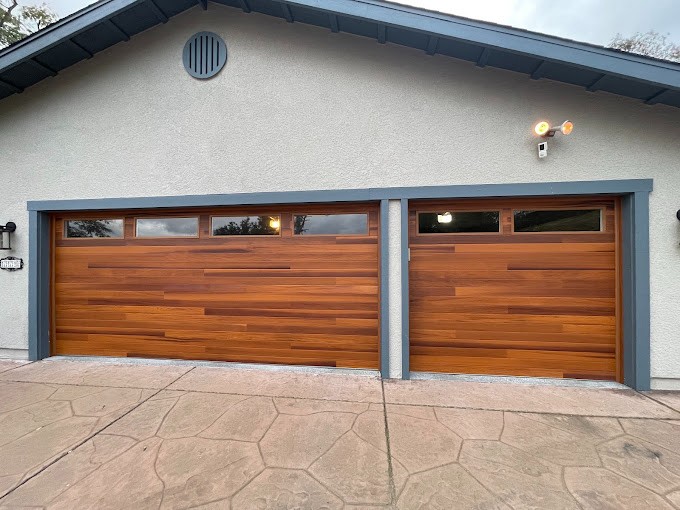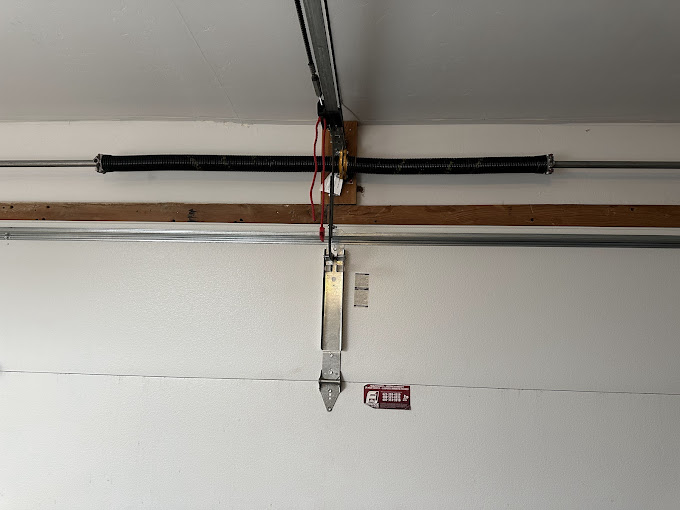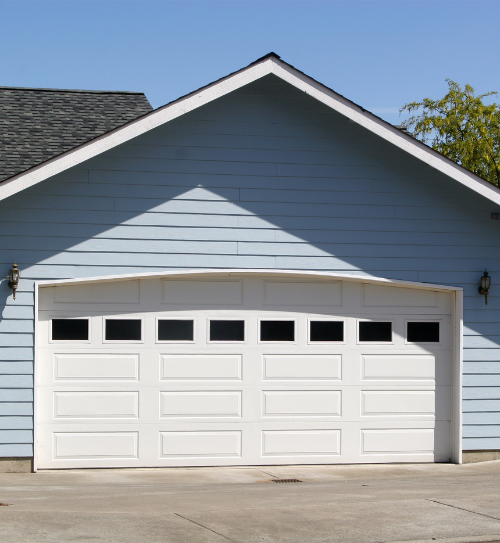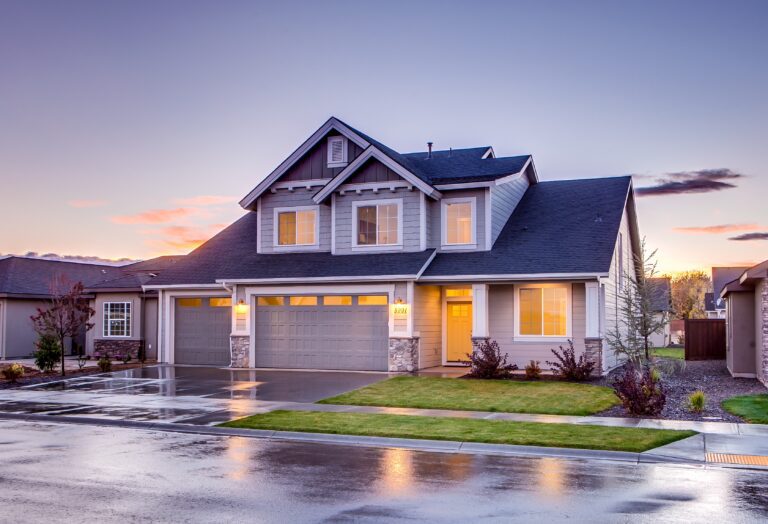Automatic garage doors are a modern convenience, many homeowners rely on daily. They provide security, ease of access, and aesthetic value to your home. However, like any mechanical system, they can encounter issues that need prompt attention. Recognizing these common problems and understanding their meanings can save you time, money, and hassle. If you’re experiencing trouble with your garage door and need reliable garage door repair in Phoenix, Olympus Garage Door Repair is here to help. This guide will explore the most common issues with automatic garage doors and what they signify.
1) Garage Door Won’t Open or Close
Power Supply Issues
One of the most common reasons an automatic garage door won’t open or close is a power supply problem. If your door isn’t responding to the remote or wall switch, the first check is whether the opener is plugged in and receiving power.
Tip: Ensure the outlet is working by plugging in another device. If the opener still doesn’t work, you might need a professional to inspect the wiring.
Remote Control Malfunction
Sometimes, the issue lies with the remote control itself. Dead batteries, signal interference, or a need for reprogramming could be the culprits.
Tip: Replace the batteries and try reprogramming the remote. If this doesn’t work, you may need to consult a specialist for further troubleshooting.
Limit Settings Misalignment
Automatic garage doors have limit settings that tell the door how far to open or close. If these settings are off, the door may not function correctly.
Tip: Check your garage door opener’s manual for instructions on adjusting the limit settings. If this seems too complex, an Olympus Garage Door Repair professional can handle it.
2) The Door Reverses Before Closing Fully
Obstruction Detection
Automatic garage doors have safety sensors to prevent them from closing on objects or people. If the door reverses before closing completely, it might detect an obstruction.
Tip: Inspect the area around the door’s path and clear any obstacles. Also, ensure the sensors are clean and properly aligned.
Sensor Alignment
If the sensors are misaligned, the door might reverse erroneously. This common issue can be fixed with a little adjustment.
Tip: Check if the sensors’ LED lights are on. If one or both are blinking, they may need realignment.
3) Strange Noises During Operation
Grinding or Squeaking Sounds
Unusual noises such as grinding or squeaking often indicate that parts of your garage door system need lubrication or have become loose.
Tip: Regularly lubricate the moving parts with a garage door lubricant. If the noise persists, it might be a sign of worn-out components that need replacement.
Banging or Popping Noises
Louder, more alarming sounds like banging or popping can signal serious issues such as broken springs or misaligned tracks.
Tip: This type of issue requires immediate attention from a professional. Please avoid using the door until it has been inspected and repaired by an Olympus Garage Door Repair technician.
4) The Door Moves Unevenly or Slowly
Spring Issues
The springs in your garage door system bear the most weight and are essential for smooth operation. If the door moves unevenly or slowly, it might be due to worn-out or broken springs.
Tip: Replacing springs can be dangerous if done incorrectly. It’s best to contact a professional service for Phoenix garage door repair.
Track Misalignment
If the tracks that guide the door are properly aligned, the door can stay upright and move smoothly.
Tip: Inspect the tracks for bends or obstructions. Small adjustments can be made with a rubber mallet, but a professional should handle significant misalignments.
5) The Door Doesn’t Seal Fully When Closed
Weather Stripping Damage
The weather stripping at the bottom of your garage door helps seal out the elements. The door might not close fully if damaged or worn, leaving gaps.
Tip: Inspect the weather stripping regularly and replace it if it’s cracked or torn.
Door Alignment
If the door is misaligned, it may not seal correctly at the bottom, leading to drafts and potential security issues.
Tip: Check the alignment of the door and tracks. If the door is leveled, professional adjustment is necessary.
6) Remote Control or Keypad Malfunctions
Dead Batteries
The most straightforward issue with remote controls or keypads is dead batteries.
Tip: Replace the batteries and see if the problem is resolved. If not, further investigation is required.
Signal Interference
Other electronic devices or structural elements in your home can interfere with the remote’s signal.
Tip: Ensure no obstructions between the remote/keypad and the opener. Moving other electronic devices away from the garage area might help.
Reprogramming Needed
Sometimes, the remote control or keypad must be reprogrammed to the opener.
Tip: Consult the owner’s manual for reprogramming instructions or contact Olympus Garage Door Repair for assistance.
7) The Garage Door Opener Runs, But the Door Doesn’t Move
Disengaged Emergency Release
The emergency release cord disconnects the door from the opener so it can be operated manually. The opener will run if this has been pulled, but the door won’t move.
Tip: Check if the cord has been pulled and re-engage the door to the opener if necessary.
Worn-Out Gears or Components
Internal components of the garage door opener can wear out over time, causing the motor to run without moving the door.
Tip: This issue requires professional inspection and likely the replacement of parts. Contact a garage door repair Phoenix service for this.
8) Flickering or Unresponsive Lights on the Opener
Electrical Issues
Flickering lights can indicate electrical issues within the opener or the home’s electrical system.
Tip: Ensure the opener is properly plugged in and check the circuit breaker. If the problem persists, a professional electrician might be needed.
Faulty Bulbs
Sometimes, the issue is as simple as a faulty light bulb in the opener.
Tip: Replace the bulbs with those recommended by the manufacturer.
9) The Door Opens or Closes Randomly
Interference with Signals
Signals from other devices can sometimes interfere with your garage door opener, causing it to operate unexpectedly.
Tip: Check for any new devices in your home that might be causing interference. Reprogramming the opener’s code can also help.
Faulty Remote Control
A malfunctioning remote control can send intermittent signals to the opener.
Tip: Test the remote and replace it if necessary. Professional services can also provide advanced troubleshooting.
10) Regular Maintenance Tips
Routine Inspection
Regularly inspecting your garage door system can help catch issues before they become significant problems. Check the springs, cables, rollers, and other components for signs of wear.
Tip: Create a monthly checklist to ensure all parts are functioning correctly.
Professional Maintenance
Even with regular DIY maintenance, having a professional inspect your system annually is beneficial.
Tip: Schedule an annual maintenance check with Olympus Garage Door Repair to keep your garage door in optimal condition.
Conclusion
Understanding the common issues with automatic garage doors and their meanings can help you maintain your system more effectively and prevent costly repairs. Knowing when to call a professional is crucial, whether it’s a minor adjustment or a significant repair. For reliable garage door repair in Phoenix, Olympus Garage Door Repair is your go-to service. With their expertise and dedication to quality, you can ensure your garage door operates smoothly and safely.
For more information or to schedule a service, visit Olympus Garage Door Repair. Don’t wait until a minor issue becomes a major problem—take proactive steps to maintain your garage door today!






